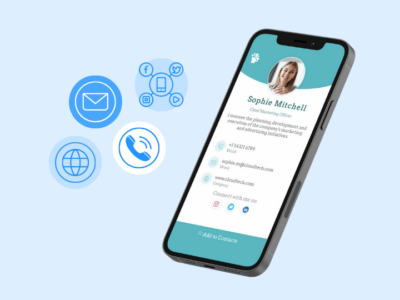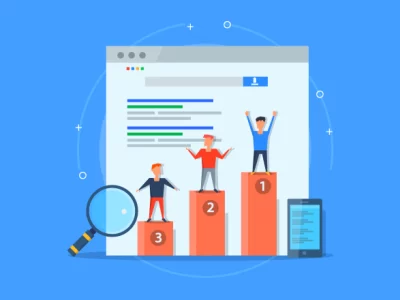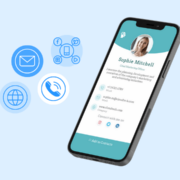Without question, the internet is one of the greatest inventions of all time. Unfortunately, not everyone can access all of the content on the internet, which is unfortunate since not everyone can use the internet as intended. To feel included, everyone must have access to the internet.
The capacity of visitors to your website and other digital materials to browse, interact with, and use them is referred to as digital accessibility. Web designers, online content authors, and developers, on the other hand, are not always aware of accessibility issues. Consider the following recommendations to ensure that your website is accessible to all visitors.
Contact QualityLogic for help establishing how accessible your website is now and how to make its content more accommodating. As a software company devoted to enhancing digital accessibility for all, they are eager to serve you. They will test your website and decide what improvements are required for approval.
Make Use of Simple, Straightforward Language
Use simple or plain language so that everyone, even those with cognitive disabilities or limited reading ability, can understand what you’re saying. It would be preferable if you collaborated with a digital accessibility team to ensure that your terminology is correct. We frequently understand what we’re saying or writing, but others may not. Highlight the suggestions below to confirm you’re on the right track.
If you need to figure out how your material will sound, use the program to test it out. QualityLogic can do this for you and then advise you on how to make the process even more open.
Sort Critical Information
- Use phrases that your readers will understand.
- Make use of as many fundamental terms and phrases as possible.
- Always clarify technical jargon and, if feasible, avoid using it.
- Avoid using the passive voice. Instead, utilize the active agent to give your sentences a distinct “actor” and make them easier to understand.
Audio and Video Subtitles
Only a few people retain knowledge in the same way they did in the past. People with hearing loss, for example, will be unable to learn through movies and sound bites. They will be able to understand what you are saying if you include subtitles to your video and audio on your website.
- Self-contained captions, themes, and phrases should be combined.
- Speakers should be named.
- Captions should accompany the sound.
- Describe audible yet unseen sounds such as a knock, ringing doorbells, and gunshots.
Make it Simple to Navigate Your Content
Adding English to videos and music is more than just making a website accessible. It also relies on how simple it is to find your stuff.
Divide the text into sections. For any reader, too much information may be daunting. As a result, you do not need to limit the amount of material on your website. If you make it easy for people to skip past text blocks, they don’t want to read. You can get to the area of the information you want to read faster. Just make sure your stuff is divided logically.
Make Use of a Variety of Headings
When you use headers, people will understand how your stuff is ordered better. People who use assistive technology, such as screen readers, will find it simpler to navigate the site and discover what they are searching for.
Every scrap of paper must be restored. You must make sure that all of your internet papers are easily accessible. The process of determining what needs to be done to make PDFs and other documents more accessible is known as remediation. This means that people with cognitive impairments and others who use assistive technology can see PDFs and other documents you have. You add a table of contents, headers, alternate text for images, and tags during this phase.
Include a Great Deal of Alternative Text
Because not everyone can see visuals, alt text is used instead. For people who are blind or have difficulty seeing, alt text is a quick written description of a photograph. It is also known as alt attributes or alt descriptions. It might also be used in place of a non-loading image.
If you include brief but descriptive alt text for each image on your website, screen readers will understand what you’re saying. In the lack of alt text, some people may ignore these images or try to deduce their meaning from the file name.
As with your content, make sure your alt text is relevant and easy to understand. These minor details pile up over time, and you should make your data as digitally accessible as possible.
To properly add Alt Text, make the following changes:
- Use keywords in the alt text whenever possible. Alt text may be used for more than just reading. Images may aid in search engine optimization, particularly for Google (SEO). More users may visit your site if you use alt text to rank higher in Google Pictures.
- Keep it short and to the point. Long alt text, especially for screen readers, may be difficult to read. It is preferable to keep things brief and to the point. You should also provide suitable alt text. Only use the exact keywords or information once.
Color Contrast Must Be Examined (and Corrected)
Color contrast has a significant impact on how easily consumers can browse your website. Color contrast influences how visitors see and interact with material on your website.
When designing a website, web developers and designers routinely consider which colors would best reflect your brand. The colors used should be distinct enough for the user to distinguish between the text and the background.
So, how do you quantify the difference between colors? First and foremost, a routine eye examination cannot accomplish this. One aspect of color is that everyone perceives differently. Even if you have good vision, they may fool you.
To complete this activity effectively, use a color contrast checking tool, such as WebAIM’s Contrast Checker. The contrast ratio of text and text pictures should be at least 7:1 according to the Web Content Accessibility Guidelines (WCAG) 2.1, except for large-scale text and images that go with it, which should have a contrast ratio of at least 4.5:1.
If Your Website is Digitally Accessible, More People Will Visit It
Web accessibility allows all users, regardless of ability level, to access and utilize online content. Web designers, content authors, and developers must understand the factors that contribute to a website’s accessibility for all users.
QualityLogic makes it easier to evaluate and convert your systems to digital accessibility. They offer a variety of testing services, technology, tools, and training to meet all of your digital accessibility needs. Visit their website to learn more about the services they provide. Get their starting kit today at www.qualitylogic.com.












Comments